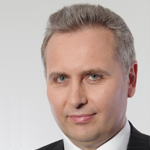Multi-asset trading allows dealers to deal on different financial markets (Forex, money market, equities, derivatives) within one trading strategy. We can say that platform is the multi-asset platform, if it allows to trade financial instruments that belong to at least two different financial markets. Today it became a strategic way of dealing.
There are three ways to start this business: to build it, buy or order as a service from the exchange, ECN or single-bank trading platform. Usually, such decisions are complex. For example, buy-side firm AXA Investment Managers has selected the TradingScreen execution management system (EMS) to provide a single platform for multi-asset trading. The system has been integrated with AXA IM’s existing Minerva order management system (OMS), provided by technology supplier Fidessa. It allows the equity, fixed income and FX trading.
Brazilian broker Indusval Corretora has selected trading technology provider SunGard’s Valdi trading system to provide execution and other brokerage services for a wide range of instruments traded on Brazilian exchange BM&F Bovespa. It trades equities, futures, fixed income and options trading.
Russian group Otkritie Securities has partnered with multi-asset class electronic platform provider Marco Polo Capital Markets to provide clients with an interface to its network of emerging and frontier markets.
Any multi-asset trading has to have three critical elements: scalability, speed and modularity. A multi-asset platform should stay modular, allowing managers to turn on and off pieces according to their evolving needs.
Also, multi-asset trading sets up new standards for clearing. Jon Hitchon, head of markets clearing at Deutsche Bank in New York, said “platforms will become more cross-asset across the market. Institutional clients, in particular, want access to clearing services across multiple asset classes on one platform.”
It’s important to remember that due to the very nature of multi-asset trading requirements these days, you’re increasingly witnessing from an FX perspective how currencies are key to arbitraging between different markets.
At the conclusion, given that we are in the state of new crisis I’d like to remind you words of Bob Fitzsimmons from ITG: “as these recent events demonstrate, the adoption of an entirely new type of multi-asset trading paradigm is not an option for institutional investors; it is a necessity.”
Author: Igor Suzdaltsev
Deputy director, Kalita-Finance
Igor Suzdaltsev—renowned economist, a specialist in financial markets with extensive experience. Worked as a project manager for algorithmic trade in OTP Bank (2005-2010) and as a Director of algorithmic trade in Alfa-Bank (2010-2011). Presently he is the Deputy General Director of “Kalita-Finans” and the President of the NGO “Ruble”. Igor is also the organizer of professional LinkedIn group called ElectronicTradingRussia. Igor actively develops the concept of the Multi-asset trade in financial markets, and is the author of numerous publications and presentations. For more details visit his sites http://www.kalita-finance.ru and http://suzdaltsev.com.

 Русский
Русский  English
English 






























